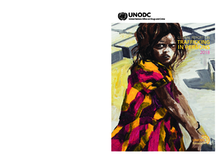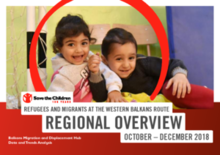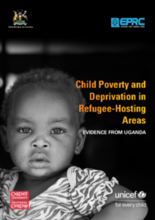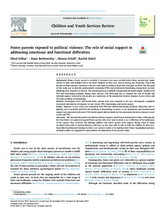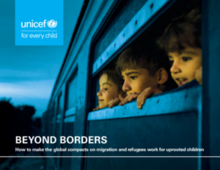Displaying 261 - 270 of 497
This resource from the National Child Traumatic Stress Network provides key points related to traumatic separation and immigrant and refugee children, adapted from the NCTSN fact sheet Children with Traumatic Separation: Information for Professionals.
This Global Report on Trafficking in Persons describes human trafficking on a global scale, including the incidences of child trafficking per region and country.
This report describes the research conducted in 2016 in Kiryandongo and Adjumani refugee settlements in Uganda, presenting a comparison of child protection system strength between 2014/5 and 2016, and child protection outcomes over the same time period.
Data and Trend Analysis (DATA) Refugees and Migrants at the Western Balkans Route Regional Overview, covering period October - December 2018, describes key trends in migrations in the region, detailing information about the number of people on the move, demography (age, sex, country of origin, etc), behavioral patterns, and routes in use - with a focus on children, particularly unaccompanied children. Data in this report includes key trends in Bulgaria, North Macedonia, Serbia, Albania, Montenegro, Bosnia and Herzegovina, and Croatia.
This Briefing Note outlines the priority areas for the Global Research Agenda, laid out by the Assessment, Measurement and Evidence (AME) Working Group of the Alliance for Child Protection in Humanitarian Action.
This study assessed child poverty, deprivation and social service delivery in refugee and host communities in selected districts in the country’s three major refugee-hosting areas: West Nile, a sub-region of Northern region that borders South Sudan; the country’s South West, which borders the DRC and Rwanda; and the capital, Kampala.
This research collected rare and vital primary data by interviewing practitioners within looked-after children’s, residential, and respite services. The study established that practitioners lacked basic awareness of radicalisation and extremism, the Prevent strategy, and the Channel programme.
The first goal of this study was to describe posttraumatic symptoms (PTS) and problems in functioning among foster parents following their exposure to the war.
This report highlights initiatives underway that work towards addressing the care and protection of refugee, migrant and displaced children – initiatives that can be replicated around the world.
This resource aims to set standards for quality, compassionate care for GBV survivors in humanitarian settings, with particular focus on the provision of case management services.


